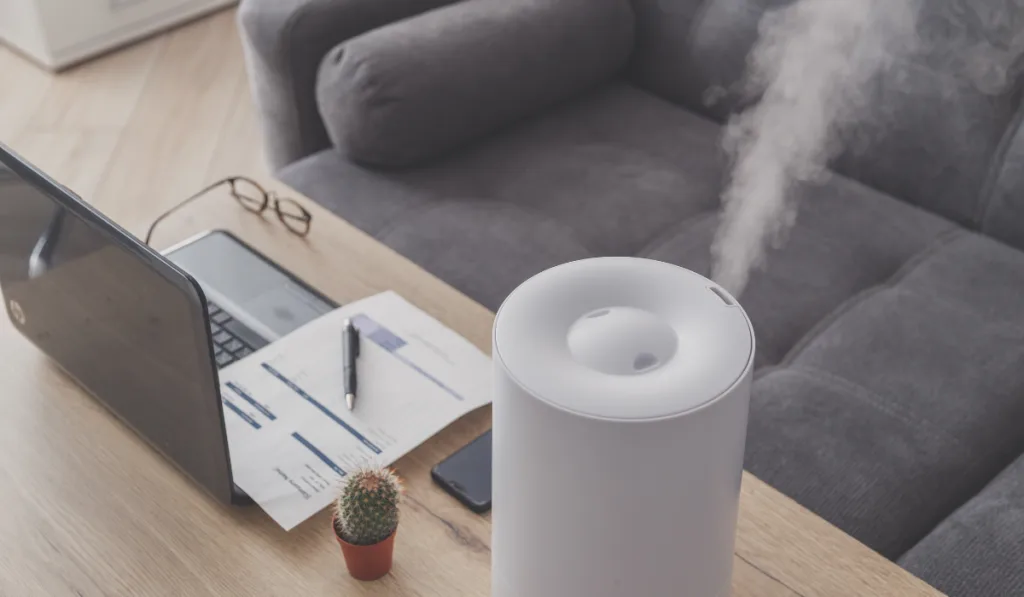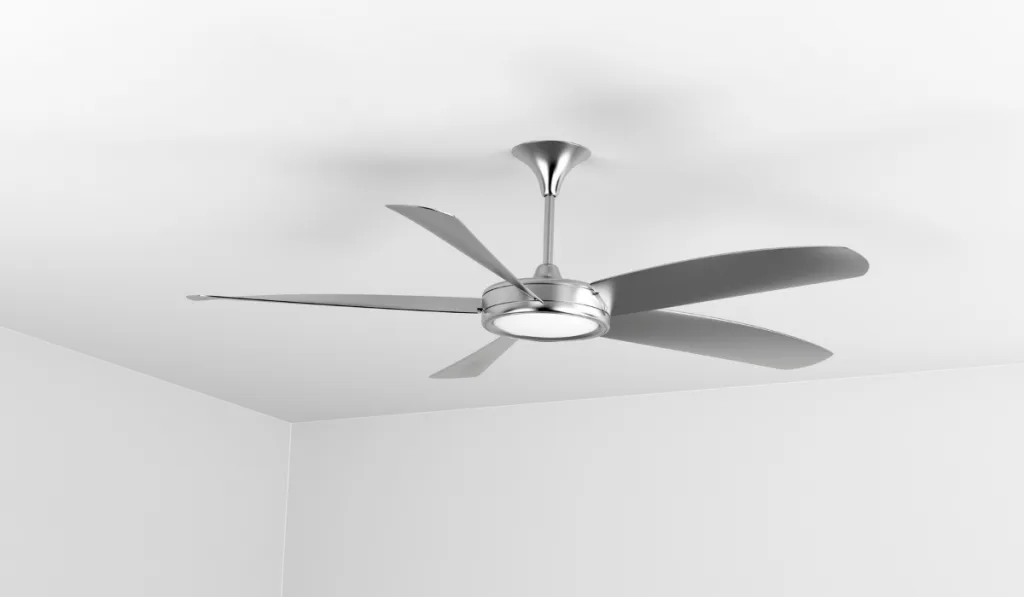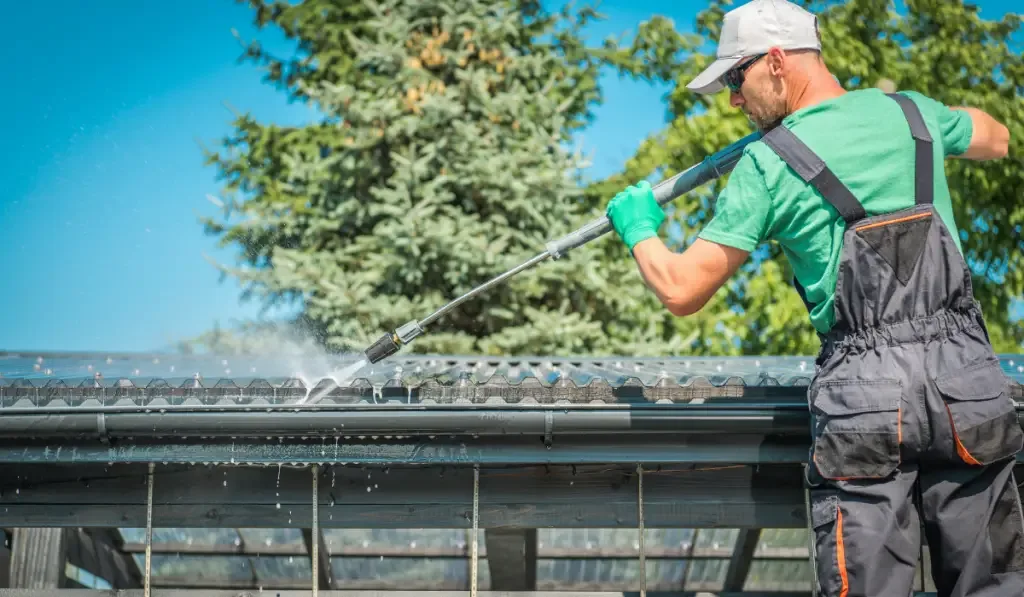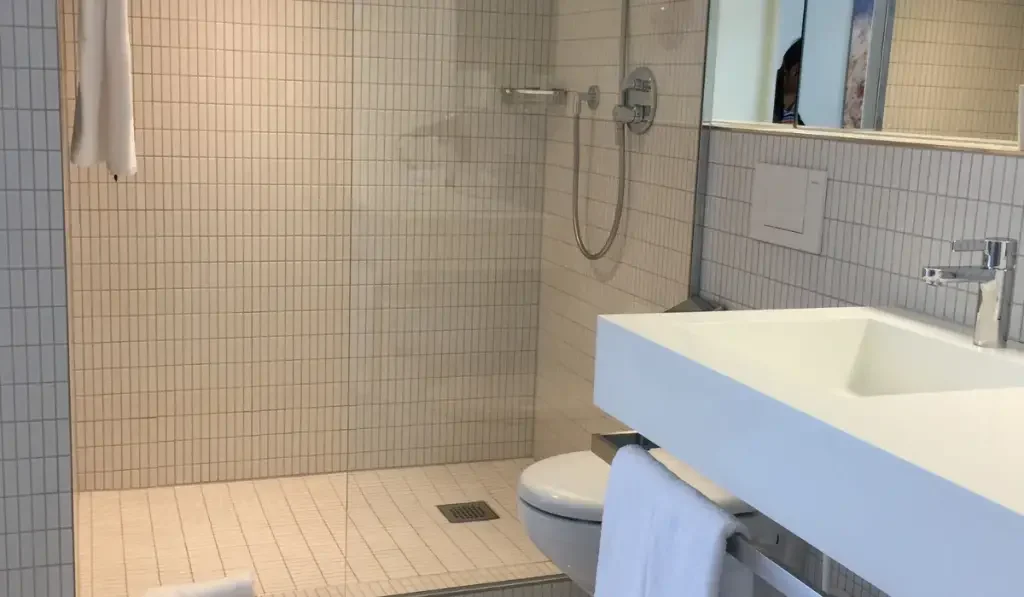Are your windows getting foggy due to condensation or do you have a mold buildup on your ceiling? All these are signs of high humidity levels in your home.
High humidity levels not only damage your home but can also lead to health issues. Mold and mildew growth as a result of humidity can cause allergies and other respiratory issues. Your home would also end up structurally damaged and your furniture could warp over time.
Maintaining the proper humidity levels in your house is something you can’t ignore. Experts recommend a humidity level that’s between 45-and 55%. Anything above that range is considered high.
Our detailed guide lists some of the essential tips to help control humidity levels throughout the year.

14 Tips to Control Humidity in Your Home
Peeling paint, musty odors, condensation on windows, and visible water stains on walls are all signs of high humidity levels in the house. Here are tips to help you keep the humidity levels in check.
1. Add Ventilation
The air quality inside your home depends on the ventilation you have. Proper ventilation translates to indoor air quality as the air circulates regularly.
Conversely, poor ventilation means there’s reduced air circulation, which can contribute to high humidity levels inside your home.
Activities like cooking, showering, and other things contribute to moisture build-up and without proper ventilation, the moisture is trapped inside, contributing to high humidity. Poor ventilation can also promote mold and mildew growth.
Proper ventilation not only removes moisture from the air inside your house but also gets rid of any pollutants.
You can add natural ventilation by installing air and wind deflectors to redirect airflow. Open your windows when the temperature is favorable.
Consider also adding mechanical ventilation like exhaust fans, range hoods, and other air systems to push the indoor air outside.
Note that mechanical ventilation only works if you don’t have gaps or cracks on your doors and windows. Cracks and other openings only push back the air inside. Consider using both mechanical and natural ventilation to remove moisture buildup and maintain the right humidity levels in your home.
2. Dry Laundry Outside

While it’s tempting to continuously use an indoor drying rack for your clothes, avoid using them often unless it’s during the cold season.
Furthermore, using a clothes dryer gives off plenty of heat and steam. Although the dryer has vents that channel the steam outdoors, some of it is left indoors. Hanging clothes and towels on a bathroom rack can also contribute to indoor humidity.
The water drips from the clothes hung indoors and evaporate into the air, which contributes to high humidity levels. Use a clothesline outside to dry your laundry
3. Invest in a Dehumidifier
Moisture is a common problem in homes.
The kitchen is the first culprit. If you boil water on the stove or cook a meal, the water evaporates into the air and adds humidity to the house. The moisture eventually condenses and without ventilation, the moisture settles on the kitchen cabinets that can warp and fall.
Investing in a dehumidifier can help prevent moisture buildup in your kitchen and reduce damage to your kitchen cabinets.
- HIGH-CAPACITY HOME DEHUMIDIFIER | Powerful Compressor Dehumidifier Removes 50 Pints of Moisture/Day Per Department of Energy Standard [60°F at 60% Relative Humidity] | Eco-Friendly, Energy-Star Rated Unit Easily Handles Rooms Up to 4,500 Square Feet Through All Seasons [Equivalent to 70-Pint 2012 DOE Standard]
- BREATHE COOL, COMFORTABLE AIR | By Eliminating Moisture from the Air, Dehumidifiers Help Prevent Odors to Provide Cleaner, Healthier Air for Your Family
- INNOVATIVE APP CONTROL OVER WI-FI | Finally, You Can Monitor & Adjust Humidity Levels from Afar! | Use the FREE Ivation App to Turn the Device On/Off, Check Ambient Temperature, Humidity & Water Levels, Adjust Fan Speed, Set a Timer & More | Great for Checking on Unit From Work, On Vacation or From Another Room
Bathrooms can also cause a humidity problem in the house. A simple action like taking a shower leads to moisture buildup, which when mixed with the air settles on mirrors as droplets.
Hot water vapor leads to more moisture buildup and condensation on cold surfaces. That’s why after a hot shower, your mirrors may appear foggy and misty.
You can reduce the humidity problem in your bathroom by using less hot water. You can either take a short shower or use cold water. A dehumidifier can also prevent condensation and mold buildup that can spread throughout the house.
However, a dehumidifier should only be used as a short-term solution, and you should find ways to solve the problem.
4. Consider Getting moisture-absorbing Plants

Plants like Peace Lily and Boston Fern when placed indoors can help absorb moisture.
Avoid having too many indoor plants as they release lots of moisture into the air. Reduce the number of plants and ensure there’s enough ventilation. Alternatively, move the plants outside.
Firewood also releases vapor into the air. If you have a fireplace and tend to store wood in your house, you should consider moving the firewood outdoors to lower humidity.
5. Fix Any Leaking Faucets and Pipes
Leaking pipes and faucets provide a path for moisture to get back into your house, which can lead to excess humidity levels.
Check the pipes for leaks and corrosion as early intervention can help prevent potential mold growth, musty smells, and humidity problems. Some leaks are not easy to spot, look for bubbling wall paint or discolored walls if you fail to hear a dripping sound.
If you have exposed popes, add insulation to them to prevent condensation from forming around the pipes.
6. Use Fans

Again, ventilation can be a cheap and easy way to reduce humidity in your home.
Box fans, ceiling fans, or wall fans can help distribute the air in your home and reduce moisture buildup in your home.
Investing in exhaust fans for your kitchen and bathroom removes any warm air from your home and releases it outdoors. Exhaust fans also remove any odors from your home, which can help improve indoor air quality.
7. Keep Your Showers Short
Taking shorter showers not only saves energy and water but can also help reduce the humidity in your bathroom significantly.
Alternatively, you can use cold water, which means there’s less steaming coming out and less humidity. If you must use steaming hot water, consider getting a dehumidifier to prevent condensation buildup within your bathroom.
8. Run the Air Conditioner
Running your air conditioning unit can also help remove excess moisture from the air and reduce high humidity levels in your home.
You’ll need to turn the AC thermostat to a dry setting. That will run the unit’s fans at low speed and allow the compressor to work in intervals. That will evaporate the moisture without lowering the temperature.
Ensure that you replace the filters and clean the AC vents to maintain indoor air quality.
Note that the use of AC to regulate humidity levels works best during summer. You’ll need to consider a different alternative during winter.
9. Open Your Windows

If the weather is favorable, consider keeping your windows open during the day. That allows the humidity to escape.
Opening windows in the bathroom prevents the place from becoming steamy, which leads to condensation buildup.
10. Clean Your Rugs and Carpets
Unknown to many carpets and rugs also collect moisture when the weather is humid.
Some common signs include a musty smell and a damp feeling. Have your carpets dry cleaned. That will help reduce humidity and prevent dust mites that may lead to allergies.
11. Consider Natural Dehumidifier Alternatives
If you don’t have money to invest in a dehumidifier, you can make your own at home.
Charcoal is an excellent item that can remove water from the air. All you need is a pile in a basket placed in a corner of a humid room. The charcoal will absorb moisture, and help to reduce humidity.
Silica gel and rock salt also absorb moisture from the air, albeit at a slow rate. The best thing is that you can reuse the desiccants after drying them under the sun.
12. Maintain Your Gutters

Gutters are meant to direct melting snow and direct rainfall away from your home’s foundation and roof.
Well-maintained gutters will take care of potential moisture problems. However, if your gutters have leaks or cracks, they can direct rain to your foundation, which will lead to increased moisture, and eventually high humidity levels.
13. Check and Seal Air Leaks
Moist air can also get inside your home through your doors and windows. Start by checking for air leaks using the matchstick trick. If the fire is blown sideways when you hold the matchstick close to doors and windows, that shows that air could be creeping in and out.
Seal the leaks with weatherstripping on doors and windows and caulk any gaps or cracks to prevent potential moisture problems that could contribute to high humidity levels.
14. Keep Bathroom and Kitchen Surfaces Dry

It’s common to leave your bathroom wet with damp towels and wet floor mats. Ensure that you wash and dry the floor mats outside to avoid a humidity problem.
Wipe down the kitchen surfaces to prevent evaporating water from moving into the air and becoming a source of humidity.
Final Thoughts
As a homeowner, your priority should be to prevent humidity from accumulating in your home. However, if you’re already dealing with high humidity levels it’s not too late. Our tips above will help you keep the levels low.
Reduced humidity levels not only help to reduce allergies, but your home will also start to smell better as you’ll have gotten rid of the foul-smelling molds that thrive in moist places. Additionally, having the right humidity levels preserves the integrity of your house as you don’t have to worry about damaged walls, floors, ceilings, or windows.
Resources
- https://www.ncbi.nlm.nih.gov/books/NBK143947
- https://www.energystar.gov/campaign/seal_insulate/identify_problems_you_want_fix
- https://climateexperts.ca/blog/7-ways-on-how-to-reduce-humidity-in-the-house/
- https://www.consumerreports.org/home-maintenance-repairs/how-to-prevent-high-humidity-levels-at-home-a1096772313/
- https://ag.umass.edu/greenhouse-floriculture/fact-sheets/reducing-humidity-in-greenhouse
- https://www.lowes.com/n/how-to/controlling-moisture-and-humidity-in-the-home

